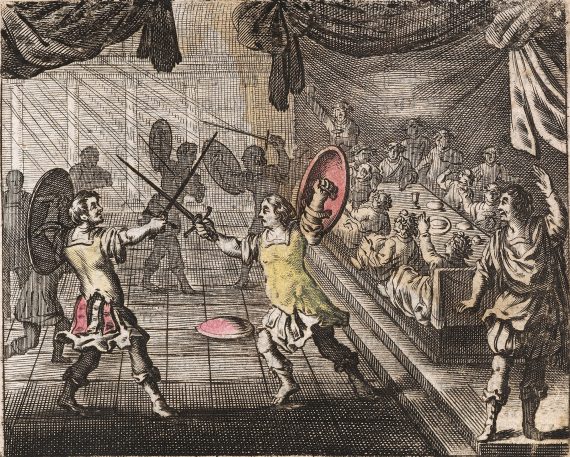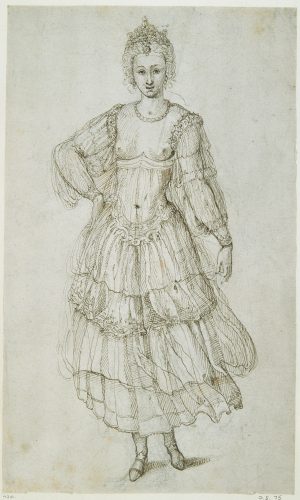Early modern theatrical performances also took place in private, aristocratic settings. In the Dutch engraving on the left, men fight on stage while dinner guests look on. This is a suggestive depiction of theatre as aristocratic entertainment, and a practice embedded in patronage. In England, a 1572 law had decided that any companies of players without formal patronage were to be redefined as vagabonds. Note the organisation and framing of domestic space into theatrical space within a household, through the use of curtains.
In England, unlike on the Continent, the public stage was predominantly a male space: women were banned from appearing on it until after the Restoration, and female characters were embodied by boy actors. But women could and did appear in private theatricals and court masques throughout the period. Here, women’s bodies – forbidden knowledge on the public stage – could be displayed with surprising boldness, as this sketch for a costume by Inigo Jones, with sheer fabric leaving the wearer’s breasts exposed, demonstrates.












